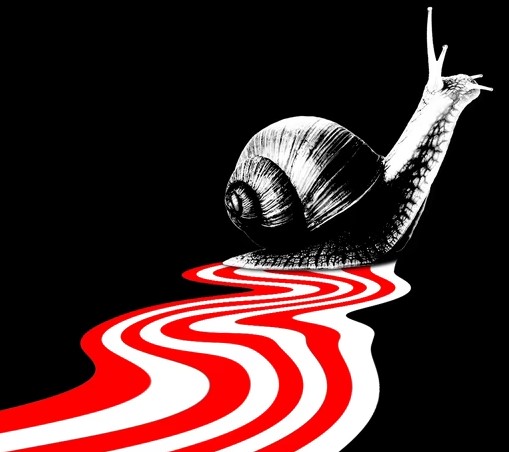I mean, ‘four bombs which hadn’t been armed’, rather than ‘four defenceless bombs’. That would have been cruel.
The gerfuffle as the remains of the aircraft, blobs of raw plutonium and the four bombs were re-secured by the Americans are well known. Two bombs landed on the ground in Palomares (‘falling open and melting everything in their path’ according to unverifiable reports) and the other two fell in the sea, where one was soon found while the forth was finally located in a deep trench off the coast several months later by Alvin, that cute little mini-sub that starred in the National Geographic magazines of the period. Antonio the wise old fisherman with the 150-metre ice-blue stare suggesting fully-fledged insanity may have helped. He was certainly cheaper to fuel.
Franco was on board the Fifth Fleet American destroyer for a brief visit and toying with a complimentary Easter bunny as the bomb was fortuitously hauled aboard.
A suggestion from the time was that the last bomb was in a very deep hole in the sea and was impossible to extract, so a plastic reproduction had been lowered off the other side of the ship to be triumphantly raised in front of the mad Caudillo to cheer him up.
Fraga Irribarne the Minister of Tourism, perhaps unaware of this sleight of hand, famously took a dip in the sea with the American ambassador at the time to show there was no radiation. On the other hand, they carefully enjoyed their frolic in front of the Mojácar Parador, some ten kilometres down the coast.
The Marines removed 800,000 tons of topsoil, fertile and safe, and took it to South Carolina, because, you see, there was no radiation.
It's now used to grow terbacca.
Roberto Puig, an eccentric architect, was meanwhile putting the finishing touches to his Hotel Mojácar located in the village of the same name (many, many years later, Pedro Sánchez, the future president, bought an apartment within the since-converted hotel). Roberto hired a van and drove over to Palomares and managed to secure part of a wing from the bomber, which he proudly affixed to the wall in the cave-bar under his hotel. The local wags said it had an unearthly glow.
A small desalination plant was built in Palomares by the Americans for thirty million dollars as a kind gesture (it was quickly closed down after the resident engineer moved to Mojácar to open a beach bar and, seeing that he wasn't coming back, the Catalan caretaker sold the guts of the building for scrap). A few rusting Geiger counters were left to record the ambient radiation level – if there was any – and new construction extending from Vera Playa into Palomares and Villaricos was given the go-ahead by forward thinking planners (see, I could have written ‘greedy capitalists’).
A recent test on Palomares snails (please pay attention here if you
count gastropods in your carefully balanced diet) has shown a higher
than normal level of radiation. Their stomach is their foot, so what
they walk on, so to speak, they eat. Snail poop, we read somewhere,
might spread radioactive dust.
Of course, a light wind, common in that corner of dusty Spain, will spread a lot more dust, radioactive or otherwise.
But one has to start somewhere.
The American Department of Energy, together with the CIEMAT Spanish atomic agency, eventually bought ten hectares of land which had been previously cleared by speculators ready for some building, although the dust already raised and blown to the heavens by the tractors and… no, I’m not going there.
Local ecologists have reacted to the news by saying that a much larger area needs to be sanitised.
The half-life of plutonium is a lot longer than ours.
For the meantime, my advice is, don’t eat the snails.
No comments:
Post a Comment